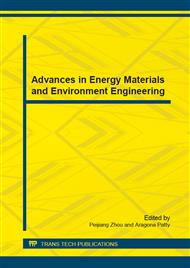p.12
p.16
p.20
p.24
p.28
p.33
p.37
p.42
p.47
Passive Control for a 2D Wind Turbine Blade with a Locally Flexible Structure at Low Reynolds Number
Abstract:
A passive control method is proposed for the performance enhancement of a 2D wind turbine blade using the aeroelastic coupling of locally flexible structure (LFS). An aeroelastic model of LFS airfoil is presented using the theory of shallow arch with large deformation. After the verification of numerical algorithm, the interaction between flow and LFS airfoil on the performance is studied with various elastic stiffness. The results show that the unsteady interaction between fluid and structure has a great potential to improve the aerodynamic performance of the airfoil. The lift-drag ratio of the airfoil is enhanced significantly at proper structural parameters, compared with the rigid airfoil. The idea for locally flexible structure can be considered as a smart structure for enhancing the aerodynamic performance of the wind turbine blade.
Info:
Periodical:
Pages:
28-32
Citation:
Online since:
December 2014
Authors:
Keywords:
Price:
Сopyright:
© 2015 Trans Tech Publications Ltd. All Rights Reserved
Share:
Citation:


